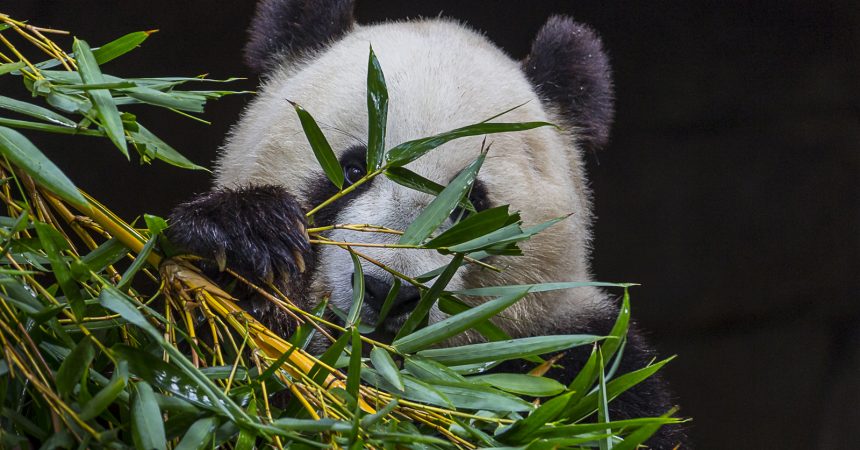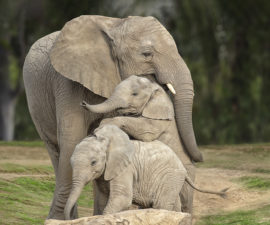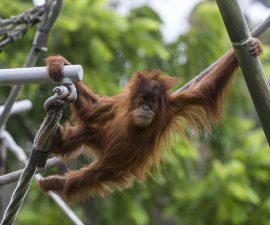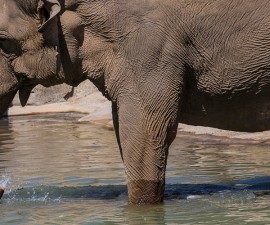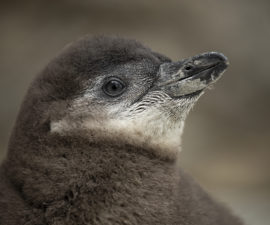Summer has officially begun here at the Zoo, and our animals are getting into their new groove for the next several weeks. Please remember as you make plans to visit the zoo, that there we are updating areas of the zoo, so you may need to reroute as you walk around.
Down at pandas, the bears are still doing well. They spend much of the day eating, especially Xiao Liwu! Most mornings when I come down to Pandas to narrate I notice that he has done a pretty good number on his morning bamboo feed. Our keepers do a great job of placing the bamboo in areas that are shaded so it stays fresher but is still visible for our guests view him eating. His most recent weight puts him at 175 pounds (in summer it’s normal for the bears to reduce fat content due to rising temperatures). However, as the day warms up, the bears will try to stay cool and spend most of their time in the shade of their caves. Even as our keepers are putting their mid-day feed out where our guests should be able to view him, I have recently seen Mr. Wu bring his bamboo into the cool of the cave and become quite difficult to see from the front.
Bai Yun has been doing very well, and has been eating quite a bit! Her most recent weight puts her at about 238.6 pounds. There really hasn’t been a lot of consistency in viewing Bai Yun; she definitely wants to be out about when the day is cooler so I would say viewing is going to be best in the morning when the Zoo first opens, and usually late evening. Mid-day has been hit or miss seeing her as she sometimes likes to sleep through the keepers attempting to get her into the bedroom.
The last few days we have been experiencing some heat waves for the coast of San Diego. So we ask all of our viewers and visitors to please remember that if we notice the animals showing signs of being uncomfortable from the heat, we will do our best to make sure that they are able to cool off—even if that means giving them access to their bedrooms, which takes them out of guest view.
We hope to see you soon, and try to stay cool out there!
Anastasia Jonilionis is a panda keeper and narrator. Read her previous blog, Sights of Summer.

